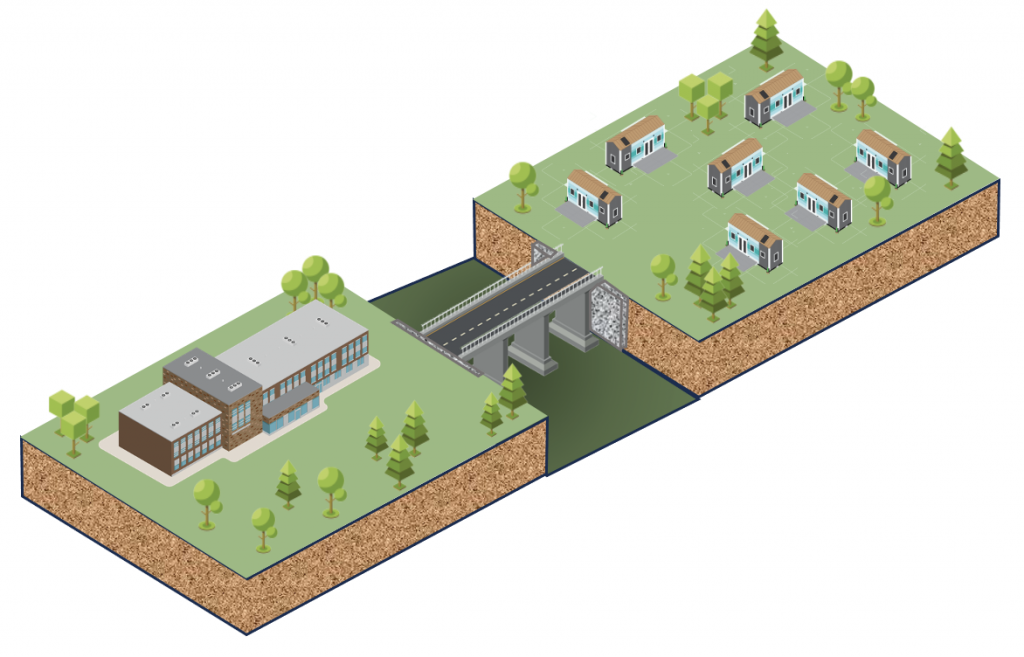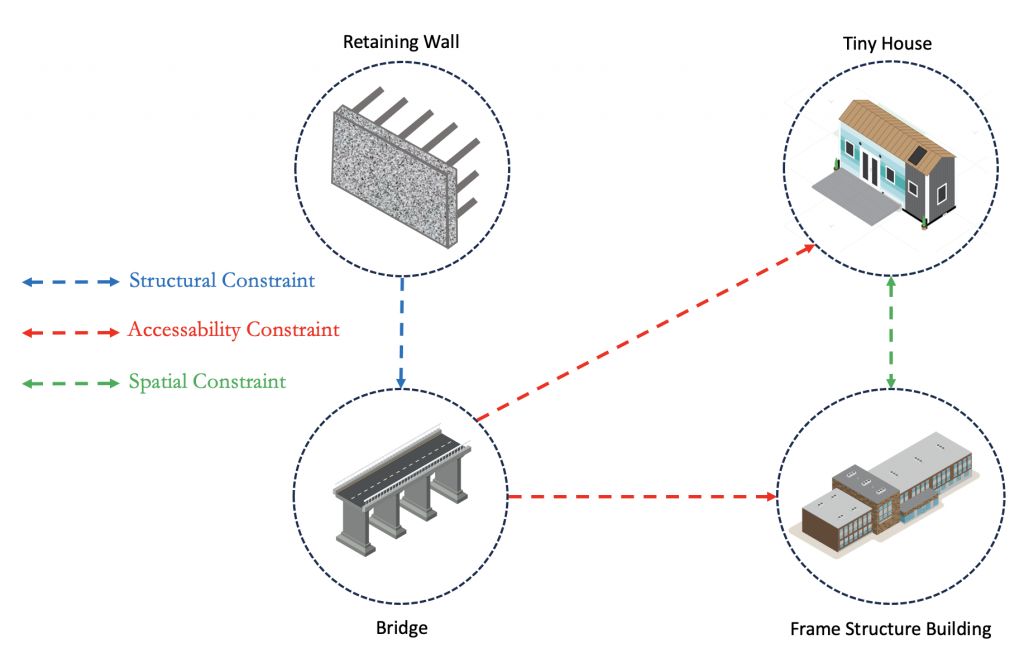Our project explores the integration of four key civil engineering systems – retaining walls, bridges, frame buildings and tiny houses – within an urban valley to meet residential and commercial needs [Fig. 1]. The design aims for accessibility and stability, with a focus on the physical and functional interplay between the components.

- Retaining walls and bridge: These elements provide structural stability throughout the valley, with the walls supporting the landscape and the bridge providing a critical link between areas. This foundation is essential for a safe, connected urban space.
- Accessibility: The bridge is central, connecting the tiny houses to the frame structure building, ensuring that all residents, including those with disabilities, have easy access to work and commerce, promoting an inclusive community flow.
- Spatial planning: The layout between the residential Tiny Houses and the commercial Frame Structure Building is designed for balance, considering proximity, noise and privacy to promote a harmonious living and working environment.
- Cohesive Urban Vision: Our urban facilities respect the natural contours of the valley and emphasise the sustainable integration of residential and commercial spaces through strategic infrastructure. This approach supports a vibrant community that prioritises accessibility and spatial harmony, and underscores the critical role of thoughtful urban planning in enhancing the quality of life for residents.
The Urban Facilities project illustrates the importance of considering structural, accessibility and spatial constraints in urban planning [Fig. 2]. By addressing these constraints, we aim to create a harmonious, functional and sustainable urban environment that enhances the quality of life for its inhabitants.

← Individual Systems | Group A – Homepage | Combined Ontology →